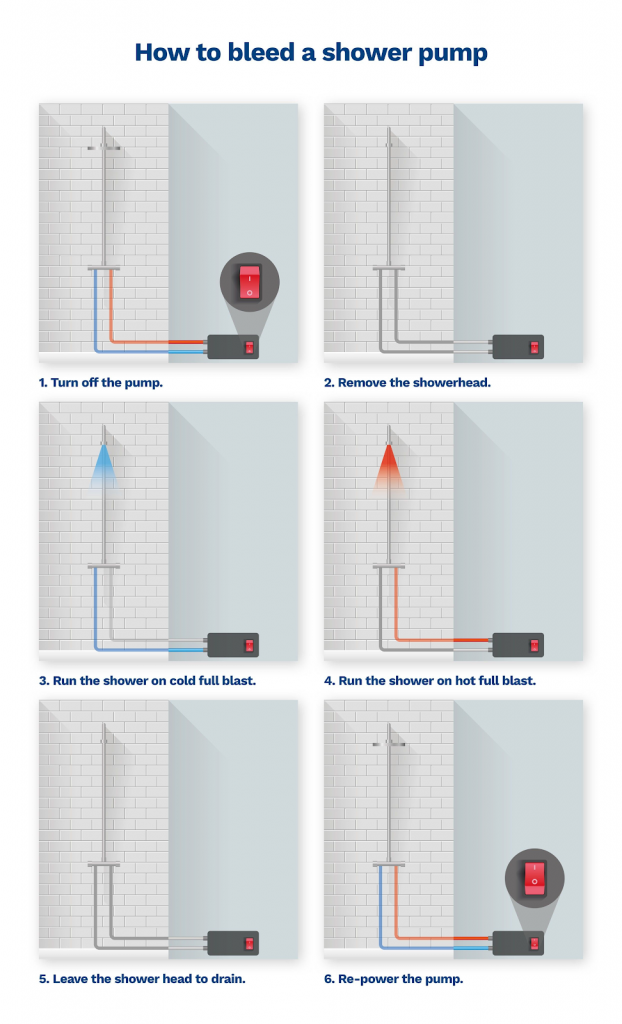How to Bleed a Shower Pump (Expert Guide)
If you're having problems with your shower, there's a chance it might need bleeding. Bleeding your shower pump is a straightforward yet crucial task that helps remove trapped air, restoring its effectiveness.
We'll take you through the step-by-step process of bleeding a shower pump, giving you the knowledge to tackle this task confidently and keep your shower running smoothly.
This is the expert guide to bleeding your shower pump. If your pump is:
- Pulsing
- Making excessive noise
- Fluctuating in temperature
or even just performing inadequately, it’s likely you have an airlock somewhere in the system.
So, if you want to bleed that air out of the pump, this is the guide for you.
Do I Need to Bleed My Shower Pump?
Bleeding a shower pump is ridiculously easy. You do not need to ring a plumber to bleed a shower pump. They will only charge you for 30 minutes of work, all of which you could have done yourself.
But, if you’re sitting on the fence, and you’re undecided whether it’s an airlock (air locked in the system) or something more seriously wrong with your shower pump, these are the key symptoms to look for.
My Shower Pump is Pulsing
A shower pump should give a nice steady boost to your water pressure. If you find that the flow seems to be pulsing on and off, then it’s likely you have an airlock. This is where air is trapped in the system and causes the pump to momentarily stop pumping.
My Pump is Making Excessive Noise
If the pump starts to make a loud banging noise or is vibrating excessively, then you likely have an airlock. The air is making the pump work harder and the banging is caused by the pump stopping and starting repetitively.
My Shower Pump Is No Longer Boosting the Water Pressure
If you’ve noticed a sudden drop in your water pressure, this is again probably an airlock. It could also be a mechanical issue, but it’s worth bleeding the pump first before calling a plumber.
What Tools Do I Need to Bleed a Shower Pump?
Before you start pulling off showerheads or switching off your electrics, you’ll need some tools to get started. These include:
- Towels
- Pliers
And that’s it.
6 Steps to Bleeding a Shower Pump
Step 1: Turn off the pump.
So, the first thing you need to do is turn off the power to the shower pump. You should also make everyone in the house aware that you are working on the shower pump.
Step 2: Remove the Showerhead
Next, you need to take your pliers and remove the showerhead from its hose. Depending on your showerhead model, you may need to refer to the manufacturer’s instructions on how to do this.
Step 3: Run the Shower on Cold Full Blast
Now, you need to turn the temperature of the shower to full cold and leave to run for about 5 minutes.
Step 4: Run the Shower on Hot Full Blast
And now do the opposite. Run the shower on full hot and leave to run for another 5 minutes.
Step 5: Leave the Hose to Drain
Place the hose and the showerhead in the bathtub. You should leave this to drain for about 15 to 20 minutes.
Step 6: Re-power the pump
Now turn on the power to the shower pump. Is it still pulsing? Any excessive noise? Has the pressure improved? If yes, then you’ve cleared the airlock and you’re good to go. If not, then it might indicate something more seriously wrong with your shower pump.
Note: Read our dedicated guide for more solutions to common shower pump problems.
Free Advice
If you’re struggling for advice regarding an underperforming shower pump, ring our dedicated experts on 0800 112 3134 or 0333 577 3134. We’re open Monday to Friday 07:00 - 17:30 and Saturday 08:30 - 12:30.


